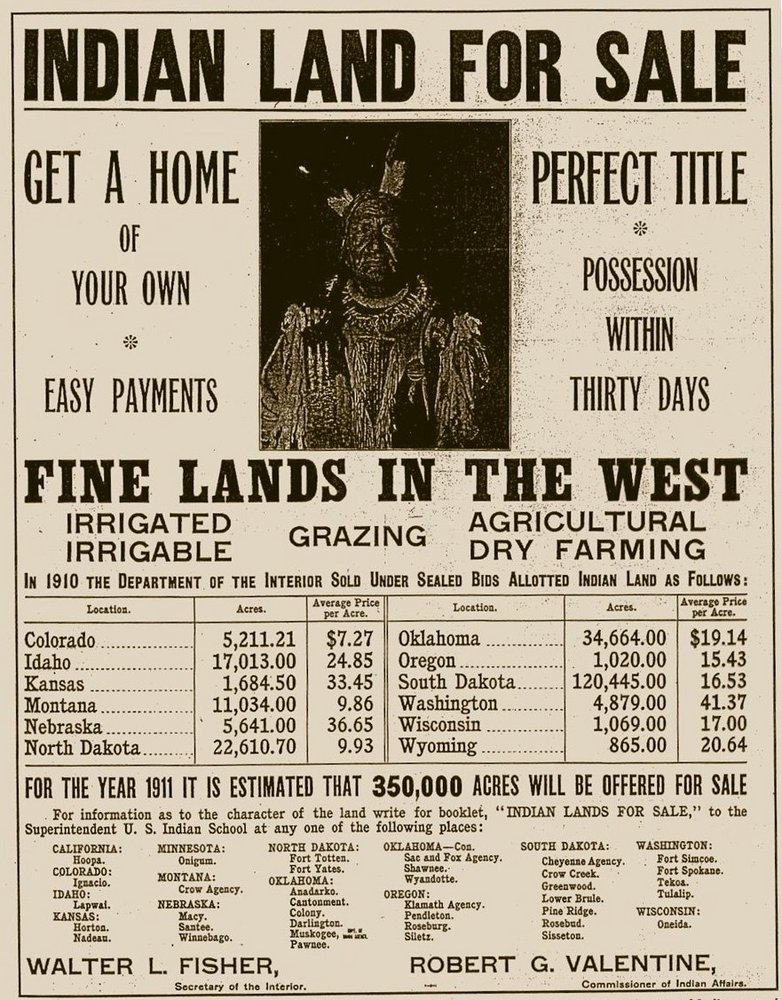A poster advertising Indian land that was for sale under the Dawes Act
The Dawes Act provided for land belonging to Indian reservations to be surveyed and pieces given to individuals living there in severalty, with the amount given being determined by their status, age, and other factors such as if they had a family or not. The same conditions also applied to any Indian not belonging to a tribe that had a designated reservation or living off a reservation. If determined necessary, the Dawes Act also provided that the Secretary of the Interior could negotiate land to be released or sold away from the Indian tribes to settlers looking to move west. If a religious society or other organization was occupying former Indian lands that were now for sale, they could have land not exceeding 160 acres. The people living on the reservations were supposed to get equal protection under the law of the state that they lived in. Furthermore, any Indian who decided to live off of the reservation and assimilate into society would be granted full U.S. citizenship along with all of the rights and immunities of one. The Dawes Act would also not apply to the "5 Civilized Tribes" (the Cherokees, Creeks, Choctaws, Chickasaws, and Seminoles), as well as the reservations of the Seneca Nation in New York, the strip of territory in Nebraska added by executive order of the Sioux Nation, and the Osage, Miames, Peorias, Sacs, and Foxes tribes. This act wouldn't stop land being used for public use, such as for highways, railroads, and telegraph lines.

No comments:
Post a Comment